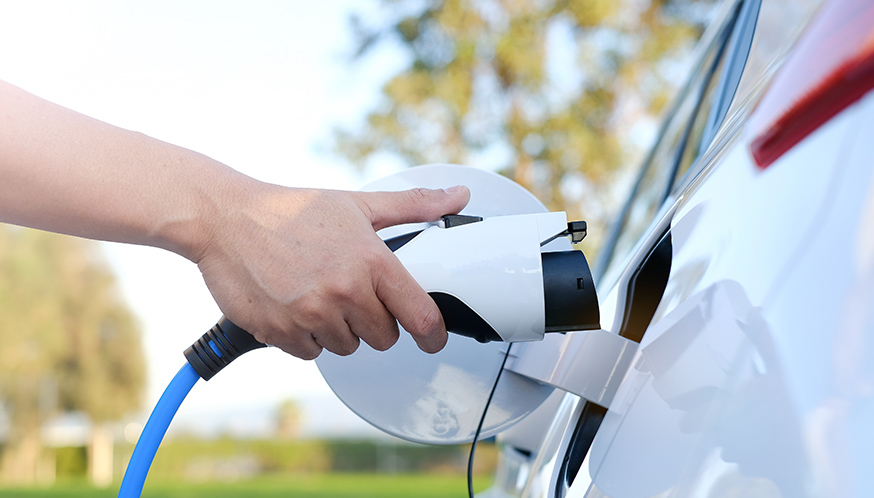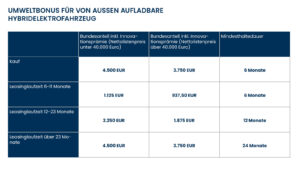-
What We DoWith our integrated fleet services, you get the entire fleet management and leasing market from a single source and can purchase, finance, manage and sell your fleet cost-effectively. And you only ever pay for what you actually use.Overview
-
ResourcesWe have a lot to share. Browse our resources library for current insights, data, strategies, and success stories from our own experts in their respective fields.Overview
-
About UsWhen Holman was founded in 1924, we set something positive in motion. Our consistent focus on people and our commitment to integrity make us who we are today.Overview
 Join Our TeamWe’re not just in the automotive business, we’re in the people business. Join us for the ride.Browse Careers
Join Our TeamWe’re not just in the automotive business, we’re in the people business. Join us for the ride.Browse Careers
FLEET ELECTRIFICATION SERVICES & SOLUTIONS
Fleet Electrification Services & Solutions
Holman has invested in research and partnership development to provide expert support as you move toward a sustainable fleet future.

Switching to "E" - but how?
While adding electric vehicles to your fleet offers many benefits, as with any vehicle acquisition, it’s important to develop a strategy in advance to make the transition to electric vehicles in a way that makes sense for your fleet. When making the transition, you’ll need to invest not only in vehicles, but also in charging infrastructure. Our experts at Holman can help you develop your “e-strategy.”

Converting your fleet to electric mobility
While fleet electrification offers many benefits, as with any vehicle acquisition, it’s important to develop a strategy in advance to make the transition to electric vehicles one that makes sense for your specific fleet.
When transitioning to electric vehicles, you need to invest not only in the vehicle, but also in the charging infrastructure. At Holman, our experts can help you develop your charging strategy – whether at the driver’s home, at the depot, or at public charging stations – and connect you with trusted charging providers and installers.
We’ll work with you to develop a long-term sustainability plan for your fleet and help you implement it, strategically transitioning your fleet from internal combustion engines to e-vehicles in a way that ensures your investment in green vehicles will pay off and usage will run smoothly.

We advise you on your decision
Although fleet electrification can offer distinct advantages, e-vehicles may require significant changes in fleet strategy and driver training. In addition, not all vehicle types are widely available as e-vehicles. We’ve invested in research and analysis to help you decide when, how and if your fleet should convert to electric or if other sustainability measures will help you meet your green goals. And last but not least, we know the incentives that make it easier for you to invest in fleet electrification- whether they’re electric utility vehicles or cars. Holman can help you from consultation to implementation for a comprehensive solution.

Stand out from the competition
There is strong public interest in current emissions reduction efforts. Companies that can demonstrate a green investment will receive preferential treatment from consumers, potential employees and clients. Many stakeholders may expect reports on your sustainability data. Holman can help you make the case with advice and data.

Taking the advantages with you
Electromobility has many advantages besides a new driving comfort and lower maintenance costs: Electric cars are subsidized by many agencies, and now you can acquire vehicles at great rates. Employees love electric cars and hybrids – and not just because of the tax advantages. Customers and the public expect an investment in the climate, that’s why green investments usually have a positive impact on business. Take advantage of it. We’ll show you how.

We will help you to find a suitable solution - feel free to contact us!
CONTACT US
×
Electromobility Frequently Asked Questions
-
What criteria influence the decision in favor of an electric vehicle fleet?
In addition to driving comfort and financial advantages, experts name three variables that must be weighed against each other making the decision to move to electric vehicles:
- Eco-footprint
- The ecological footprint states how sustainable a company is in terms of the environment. At first glance, everything speaks for a change to an electric fleet in fleet management. But if you are really interested in the so-called eco-footprint, you also have to calculate whether the ecological footprint is actually reduced by the measures, because as always, the devil is in the details. At the beginning of this journey, most people thought that the calculation was quite simple: take manufacturer consumption, increase it by a factor of X, and that’s it – the reduced footprint. But it’s not that simple. If you want the true values, you have to start with the CO2 consumption during production. Even here, there are a wide variety of possibilities: Was the product produced in Germany, the USA or China and transported here? And where was your vehicle’s battery manufactured? Depending on the answer to this question, more CO2 is “produced”. The next topic is electricity consumption. What values are used as a basis? Manufacturer’s data? Results from Ökotest? And which electricity mix should I assume for my calculation of the Footprint? It gets even more complicated with hybrids. Here, we still have to differentiate between how much is driven electrically and how much conventionally, and then simulate the consumption for both. So if you really want to write valid values in your sustainability report, you have to dlve a bit deeper into the subject.
- Costs
- Many people seriously want to operate more sustainably. But are the decision-makers also prepared to bear higher costs in order to reduce CO2 consumption? Or is the company only willing to reduce CO2 if costs are also reduced or at least remain the same? Both are possible, but with a fleet of several hundred cars, you have to do the math in detail here, too.
- Employee retention
- Company cars are in many cases tools for employee retention. Since electric cars/hybrids are trendy for image reasons and also offer tax advantages, these benefits are currently extremely sought after by employees. But for now, this has nothing to do with reducing CO2 levels. The suspicion of “greenwashing” is easily accused, because there is no serious plan for fleet electrification , but the change seems motivated by popularity.
- The bottom line is that e-mobility is new to everyone – often including experts and fleet managers. There is not yet enough empirical data on consumption and production. If you are interested in a serious analysis, our e-mobility consultants can help you with advice and calculation tables.
- Eco-footprint
-
What do I need to consider when transitioning my fleet to EVs?
While there are many benefits to adding electric vehicles to your fleet, as with any vehicle acquisition, it is important to develop a strategy in advance to make the transition to electric vehicles in a way that makes sense for your specific fleet.
When transitioning to electric vehicles, you need to invest not only in the vehicle, but also in the charging infrastructure. At Holman, our experts can help you develop your charging strategy – whether at the driver’s home, at the depot, or at public charging stations – and connect you with trusted charging providers and installers.
We’ll work with you to develop a long-term sustainability plan for your fleet and help you implement it, strategically transitioning your fleet from internal combustion engines to EVs in a way that ensures your investment in green vehicles will pay off and usage will run smoothly.
-
How does Holman advise electric fleet operators?
Although fleet electrification can offer clear benefits, EVs can require significant changes in fleet strategy and driver training. In addition, not all vehicle types are widely available as EVs. We’ve invested in research and analysis to help you decide when, how and if your fleet should convert to electric or if other sustainability measures will help you meet your green goals. And last but not least, we know the incentives that make it easier for you to invest in electric fleets – whether they’re electric utility vehicles or cars. Holman can help you with a comprehensive solution from consultation to implementation.
-
How does implementing Evs in my fleet help to differentiate me from the competition?
There is strong public interest in current emissions reduction efforts. Companies that can demonstrate a green investment receive preferential treatment from consumers, potential employees and contractors. Many stakeholders may expect reports on your sustainability data. Holman has included sustainability reporting in its fleet technology solutions offering so you can demonstrate your fuel and maintenance cost savings to investors, report on your progress toward sustainability goals, and provide data to support your sustainability credentials in RFP responses and sales pitches.
-
Can you also apply for government subsidies such as the environmental bonus from BAFA for e-car leasing?
Owners of electric vehicles can apply for a government environmental bonus from BAFA (the German Federal Office of Economics and Export Control). To do so, the leasing customer must first make a special additional payment equal to the amount of the government subsidy (e.g., 6,000 euros for an electric car) until the vehicle is registered in his or her name. Then the manufacturer’s share of the bonus is immediately offset in the leasing process and reduces the monthly leasing rate, as one is accustomed to doing with the special payment (“down payment”). As soon as the car is registered in his name, the customer applies for the BAFA environmental bonus and, after successful verification, receives the cost of the special payment back in the form of the bonus.
-
What are the requirements for payment of the environmental bonus for EV leasing?
The leased car must be an eligible model (BAFA list of eligible models).
The net list price of the vehicle must not exceed 65,000 euros
The manufacturer must have provided its share of the environmental bonus. This must be evident from the leasing contract (comparative calculation of the monthly leasing rate without the manufacturer’s own contribution).
-
Is now the right time to lease electric cars?
That depends on your business goals and how your fleet is used. Electric cars are now so popular, even in fleets, that there are longer and longer delivery times. That makes planning difficult for companies that think big. The fact that the subsidy for EVs has just been extended to 2024 speaks in favor of rapid implementation. Whether this subsidy will continue much longer is uncertain. CO2 certificates can also be applied for for each electrically powered vehicle. As of now, the Federal Environment Agency is promoting electromobility through the so-called greenhouse gas reduction quota (GHG quota for short).
To give your company more planning security, it was already officially decided in November 2020 to extend the innovation premium until the end of 2025. This means that you can now apply for the increased subsidies for electric vehicles from BAFA (Federal Office of Economics and Export Control) until 2025. It’s worth it: purchase or leasing are each subsidized by up to 6,000 euros.
However, there is also bad news for the hybrid, which is so popular with employees for tax purposes: the subsidy will be focused on EVs. Plug-in hybrids will only be subsidized in exceptional cases until 2022, e.g. if they have a minimum range of 60 kilometers and 80 kilometers until 2025. In addition, the application for subsidies can only be made when the registration certificate is submitted, and therefore after delivery. For hybrid vehicles with a range of less than 60 kilometers ordered as early as 2021, this could mean that the subsidy will no longer apply if the vehicle is delivered in 2022. Take this into account in your planning.
-
Electric and hybrid - what subsidies are available that also work for leasing?
In addition to contributing to the climate friendliness of your company, the subsidy can also be worthwhile for you financially. In many cases, we are talking about sums of around 5,000 euros per vehicle. You can find the official tables here.
This applies to battery electric or fuel cell vehicles:

Federal share incl. innovation premium (net list price below 40,000 euros)
Federal share incl. innovation premium (net list price over 40,000 euros) Minimum holding period
Purchase 6,000 EUR 5,000 EUR 6 months
Leasing term 6-11 months 1,500 EUR 1,250 EUR 6 months
Leasing term 12-23 months 3,000 EUR 2,500 EUR 12 months
Leasing term over 23 months 6.000 EUR 5.000 EUR 24 months
This applies to externally chargeable hybrids:
Federal share incl. innovation premium (net list price below EUR 40,000) Federal share incl. innovation premium (net list price above EUR 40,000) Minimum holding period
Purchase 4,500 EUR 3,750 EUR 6 months
Leasing term 6-11 months 1,125 EUR 937.50 EUR 6 months
Leasing term 12-23 months 2.250 EUR 1.875 EUR 12 months
Leasing term over 23 months 4,500 EUR 3,750 EUR 24 months
Of course, calculating whether the introduction of electric vehicles is worthwhile is not simple. But our experts have now developed decision formulas for this purpose. They help you better weigh up finances and/or ecological footprint. So you can make optimal decisions for yourself or your management.
We will also be happy to advise you on the conditions BAFA imposes on fleets, which exemptions apply to hybrids, and how to apply for funding.
-
Why electric?
Electric vehicles offer many advantages, especially when used extensively in a fleet. Because they do not have gasoline-powered engines, electric vehicles have fewer vehicle components that are subject to wear and therefore require less maintenance.
In addition to direct savings on operating costs, the German government offers incentives for switching to EVs because electric vehicles produce no emissions, they can help your fleet meet regulatory or investor-required sustainability standards. There’s also the opportunity for electric fleet CO2 certificates, which we assist you to profitably sell.
Converting your fleet to green vehicles can also help you attract employees interested in sustainability and win contracts with sustainability requirements or preferences.
Related Services

Fleet management software Service
Our software helps you not to lose the overview and to make strategic decisions.

Holman Insights App
With our Insights App, your drivers always have all important services and information with them on their mobile phones.

Telematics
By connecting fleets, fleet managers can collect a wide variety of data and optimize it accordingly.
It looks like you've navigated to our Holman DE-EN website and are located outside of this region. Would you like to continue or select a different region?
✕


